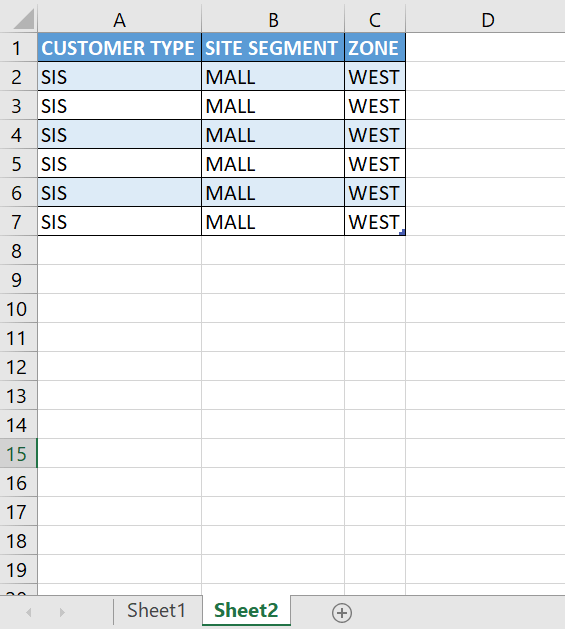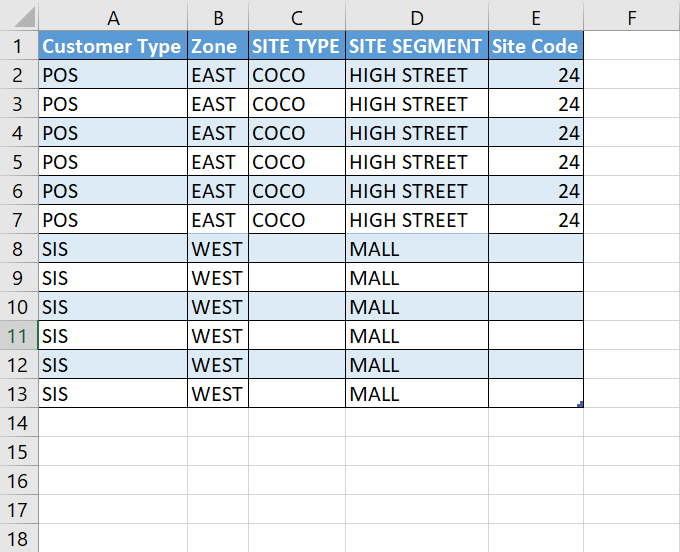Nested For Loop in Excel VBA
By Hemanta Sundaray on 2022-05-20
Below, we have two different datasets in two differen worksheets in a single Excel workbook.
We can combine both the datasets into a single dataset using the Sub procedure below:
Sub Worksheet_Combine()
Dim i As Long
Dim j As Long
Dim lastColumnFirstDataset As Long
Dim firstColumnSecondDataset As Long
Dim ws1 As Worksheet
Dim ws2 As Worksheet
lastColumnFirstDataset = ws1.Cells(1, 1).End(xlToRight).column
firstColumnSecondDataset = ws2.Cells(1, 1).column
lastColumnSecondDataset = ws2.Cells(1, 1).End(xlToRight).column
Set ws1 = ActiveWorkbook.Worksheets("Sheet1")
Set ws2 = ActiveWorkbook.Worksheets("Sheet2")
For i = 1 To lastColumnFirstDataset
For j = firstColumnSecondDataset To lastColumnSecondDataset
If LCase(ws1.Cells(1, i)) = LCase(ws2.Cells(1, j)) Then
Range(ws2.Cells(1, j).Offset(1, 0), ws2.Cells(1, j).Offset(1, 0).End(xlDown)).Copy _
ws1.Cells(1, i).End(xlDown).Offset(1, 0)
End If
Next j
Next i
End SubIn the code snippet above, the outer For loop is using the i counter variable to loop through the first row in the Sheet1 worksheet. The inner For loop is using the j counter variable to loop through the first row in the Sheet2 worksheet.
Each time through the i loop, the code runs through the j loop multiple times.
Executing the Worksheet_Combine Sub procedure above gives us the following output:


